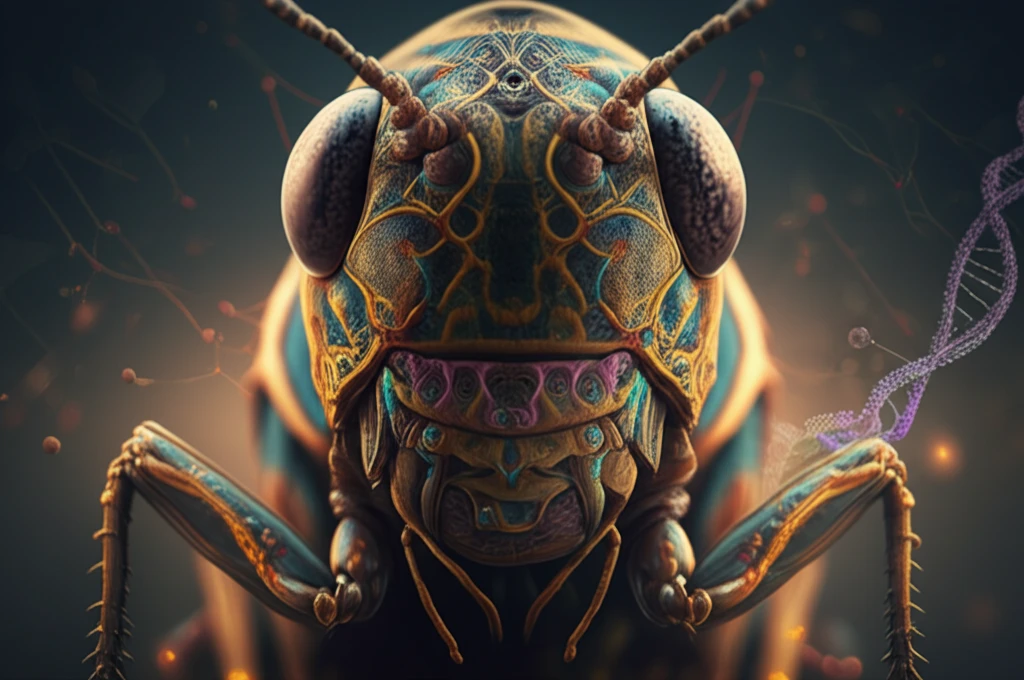
Locust Labrums: What Can These Tiny Mouthparts Tell Us About Evolution?
"Unlocking Evolutionary Secrets: How the motor innervation pattern of locust labral muscles is reshaping our understanding of insect evolution"
Evolution is a never-ending puzzle, with scientists constantly seeking new clues to understand how life on Earth has transformed over millions of years. Insects, with their incredible diversity and adaptability, provide a rich source of evolutionary insights. Recent research focusing on the seemingly small mouthparts of locusts has uncovered surprising connections to the deep history of insect anatomy.
Locusts, known for their swarming behavior and agricultural impact, possess a complex mouth structure. One key component is the labrum, a flap-like structure that helps manipulate food. For decades, scientists have debated the origin and evolutionary history of the labrum. Is it a fused pair of appendages, remnants of an ancient body segment, or something else entirely?
A new study published in the Journal of Comparative Physiology A sheds light on this debate by meticulously mapping the motor innervation patterns of labral muscles in Locusta migratoria. By tracing the nerves that control these tiny muscles, researchers have uncovered evidence supporting the hypothesis that the labrum evolved from fused appendages. This discovery not only deepens our understanding of insect evolution but also highlights the power of detailed anatomical studies in revealing hidden evolutionary connections.
Labral Muscles and Motor Innervation: What Does It All Mean?

The research team, led by Abid Mahmood Alvi and Peter Bräunig, used a technique called Neurobiotin™ tracing to map the motor neurons connected to the labral muscles. Motor neurons are the nerve cells that control muscle movement. By injecting Neurobiotin™ into specific nerves and muscles, the researchers could trace the pathways of these neurons back to their origins in the locust's nervous system.
- Dual Control: Labral muscles receive innervation from both the tritocerebrum (a part of the brain) and the suboesophageal ganglion (a nerve center in the head).
- Midline Crossing: Many motor neurons send axons across the midline of the locust's body to innervate muscles on both sides.
- Three Pathways: Axons cross the midline using three different pathways in the periphery.
- No Inhibition: The labral muscles appear to lack inhibitory innervation, suggesting a primarily excitatory control system.
What Does This Discovery Mean for Our Understanding of Insect Evolution?
This research adds to a growing body of evidence that supports the appendicular origin of the labrum. By combining detailed anatomical studies with molecular and developmental data, scientists are piecing together a more complete picture of how insects have evolved over millions of years. Understanding the evolutionary history of insect mouthparts is not just an academic exercise. It can also provide insights into insect feeding behavior, adaptation, and even pest control strategies. The next time you see a locust, remember that its seemingly simple mouthparts hold secrets to a complex evolutionary past.
